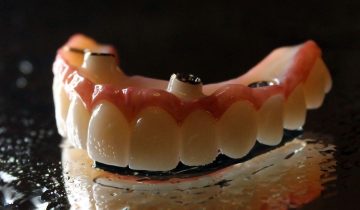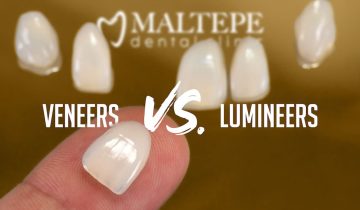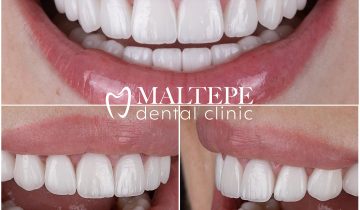Last updated on May 27th, 2024
Gum disease (periodontal disease) refers to all kinds of diseases associated with the periodontium or the tissues supporting the teeth. Gum disease is a widespread condition where the gums become swollen, sore, or infected. Especially, most adults have gum disease to some degree.
What is Gum Disease?
Gum disease, also called periodontal disease, is basically a bacterial infection of the tissues that hold the teeth. If gum disease progresses, it affects the bones supporting the teeth and may even result in tooth loss. It has two primary types: gingivitis and periodontitis. Gingivitis is a milder form of gum disease. You may have gingivitis without feeling any discomfort. On the other hand, periodontitis is a more severe issue.
What Causes Gum Disease?
Dental plaque, which typically results from poor oral hygiene, is the primary cause of gum disease. Dental plaque contains bacteria that irritate and damage the gums. When plaque and tartar, which is a hardened plaque, build up around the teeth, gums become inflamed. Also, some further factors may increase the risk of periodontal disease:
- Hormonal changes in women. Due to hormonal changes such as those happening during pregnancy, menopause, and monthly menstruation, gums become more sensitive. So that gingivitis may develop more quickly.
- Illnesses, such as diabetes and AIDS.
- Medications that reduce the flow of saliva, which protects teeth and gums.
- Genetics. The family history of dental problems can be a factor that increases the risk of periodontal disease.
- Bad habits, such as smoking. These habits disable the gum tissue from repairing itself.
- Age. As people get older, they are more likely to experience gum disease.
The early stage of gum disease is known as gingivitis. If gingivitis is not treated, a condition called periodontitis can develop. And this state of the disease affects the tissues supporting the teeth. Moreover, if periodontitis is not treated, it may damage the bone in your jaw, and bone loss may occur. So, this may result in tooth loss.
Ignoring a gum disease and leaving it untreated may cause severe further health issues as well. Untreated bacterial infections can enter the bloodstream and travel to other parts of the body. There is a possibility for more significant problems such as respiratory diseases and diabetes in this kind of case. It may even increase your risk of heart disease or stroke.
If you experience any of the symptoms mentioned above, you are strongly recommended to visit a competent dentist. Periodontal therapy can stop the progression of gum disease. If the gum disease is diagnosed at earlier stages, the dentist can apply better and more effective treatments.
How to Treat Gum Disease?
The best gum disease treatment is prevention. With proper oral hygiene, gum disease is usually preventable. Brushing your teeth twice a day, flossing once a day, visiting your dentist regularly for checkups can mostly prevent gum disease.
However, when gum disease occurs, various treatment procedures can be used depending on how far the disease has progressed. If gum disease can be diagnosed early, professional cleaning and improving oral hygiene can be sufficient. Besides professional cleaning procedures such as root planning and scaling, your dentist may recommend antibiotics and antibacterial toothpaste. These are non-surgical treatments that your dentist may use. If you have more severe gum disease, these precautions may not be adequate.
Gum Surgery
When the gum disease problem becomes more severe, your dentist may recommend gum surgery. There are different gum surgery procedures, and the type of procedure is determined according to the severity and type of gum disease. Surgical treatments include:
Flap Surgery
This procedure is also called pocket reduction surgery. This procedure is performed when there is tartar in deep pockets, and the bones that support your teeth are damaged due to severe gum disease. With the flap surgery, the gum tissue is lifted, the tooth’s roots are cleaned, the tartar is removed, and the damaged bone is repaired.
Bone Grafting
When the bone supporting your teeth is damaged, a bone grafting procedure may be required. With this procedure, the damaged bone is replaced with new bone. Moreover, bone grafting promotes further bone growth in the diseased area. When the damaged bone is repaired, tooth loss can be prevented.
Guided Tissue Regeneration
Bone-making cells grow slower than soft tissues do. And to provide more support to the teeth, the gaps between the teeth and bone are expected to be filled with growing bones. During this period, these gaps need to be protected from soft tissues. An artificial membrane is placed between the tooth and bone at this procedure, and this material prevents fast-growing soft tissues from filling the gaps.
Gum Tissue Grafting
This procedure is used to protect your teeth against the damaging effects of gum recession. Gum recession is an important issue that may end up with tooth loss and additional dental problems. There are different types of gum tissues grafting procedures. However, basically, your dentist remove tissues from the roof of your mouth and reattach these tissues to the areas where the gum has receded. This procedure protects the tooth from future damages and improves its appearance.
Pink Aesthetics (Gingival Aesthetics)
Having white, straight and well-shaped teeth is not enough to have aa beautiful smile. Also, your gums need to be healthy and beautiful-looking as well. The color of healthy gums is light pink. And for an aesthetic look, gums are expected to match your teeth and surround them tightly. One of the most common problems is to show excessive or asymmetrical gums when smiling. This means you have a gummy smile, which is an aesthetic problem.
Aesthetic gum therapies are called pink aesthetics (gingival aesthetics). The fundamental objective of pink aesthetics is to create harmony between the teeth and gums and maintain this harmony. These therapies involve the correction of asymmetry between the gums and teeth, making adjustments in the form and color of the gums, preventing the gummy smile. The procedures mentioned above, such as regenerative techniques, are among the pink aesthetic methods. Gingivectomy and gingivoplasty are also very common procedures to remove excessive gums and create better-looking gums.
Gingivectomy and Gingivoplasty
Gingivectomy is a surgical procedure to remove overgrown and diseased gum tissues. The dentist cuts away the excessive parts of the gums. Thus the gums are leveled, and the appearance of the gums is improved. And in the end, teeth – gums harmony, which is an integral part of a beautiful smile, is achieved. Gingivectomy procedure can be applied with different techniques. Today, using a laser for this procedure is very common. Factors such as rapid healing and reduced pain make this technique more preferable.
The only difference between gingivoplasty and gingivectomy is that gingivoplasty is performed only for cosmetic reasons. With this procedure, gum tissues surrounding the teeth are reshaped to improve the appearance. Gingivoplasty can be performed during or after the Gingivectomy procedure.
Complementary Treatments
If gum disease is severe, a special cleaning, which is called scaling, and root planning can be performed. Plaque and tartar are carefully removed down to the bottom of each periodontal pocket. This procedure helps gum tissues to heal and gum pockets to shrink. Together with this treatment, some medications can be prescribed by the dentist. Also, to remove tartar deposits, laser treatments (gum laser operations) can be used. If the disease advances to a level where periodontal pockets are deeper and supporting bones are destroyed, receding gums treatment may require the dentist to rebuild and reshape the bone with a bone grafting procedure. It is a certain fact that if gum disease is left untreated, surgery may be needed to save the affected teeth.
In addition to the techniques and procedures mentioned above, complementary treatments also can be helpful against gum diseases.
- Toothpaste for gums
- Mouthwashes for Gums
- Natural remedies for gums
How Long Does Gum Treatment Take?
The duration of the treatment varies depending on the severity of the case and the procedure used. Mostly, gum surgery procedures can be completed approximately in two hours.
Gum Disease Treatment Cost
Depending on the type of procedure that will be applied, gum treatment costs between $500 to $10,000 in the USA. The cost of the treatment also depends on how much work will be done. On the other hand, the costs of gum disease treatments vary depending on the country. Gum disease treatment in Turkey is very affordable compared to the USA, the UK and many European countries.
How Can Gum Disease Be Prevented?
Gingivitis can be reversed, and the progression of gum disease can be stopped by proper oral hygiene. Proper oral hygiene practices consist of brushing your teeth at least twice a day and flossing regularly. These fundamental care remove plaques from your teeth and gum. Otherwise, plaques grow along your gum line, and this causes gum diseases. You should also have professional cleanings at least twice a year. Regular dental visits are also helpful in terms of diagnosing future gum diseases earlier. However, if the gum disease is severe, further medical and dental treatment is required, as mentioned above.
Note: Medically Reviewed by Dr. Yusuf Ilhan, on April 3, 2021








